Revere Silver
What Did Revere’s Shop Make?
Paul Revere was a versatile craftsman. He eagerly met the needs of his customers, not hesitating to create new forms or adopt the latest styles. His shop made a great variety of items, at least 90 different types. His products included flatware, mostly spoons; table wares such as cups, tankards, porringers, salts, casters, trays, and bowls; tea and coffee equipment such as coffeepots and teapots, creamers, sugar tongs and sugar bowls; personal items such as gold jewelry and buttons, and silver buckles; and metal harness fittings, among other things. His most unusual pieces were made before the Revolution, when he crafted a chain for a pet squirrel, an ostrich egg snuffbox, and a child’s whistle. He also made brass gunner’s calipers for two British officers, silver letters for the back of a chaise, surgical instruments, and a sword hilt. Revere did not work in pewter.
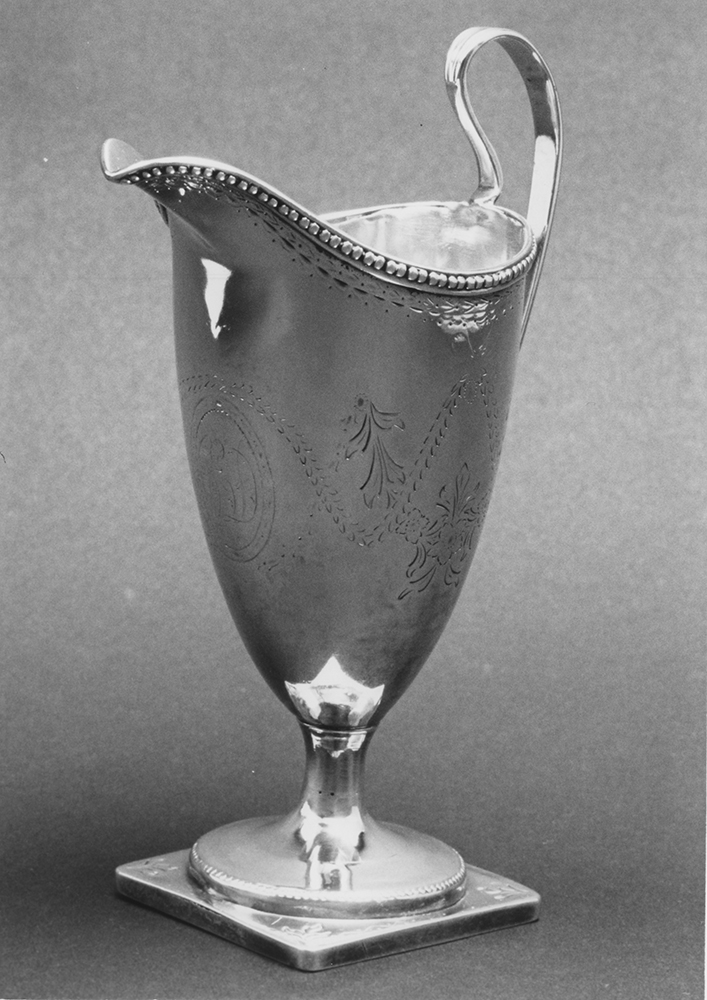
Photo © Jim Smalley.
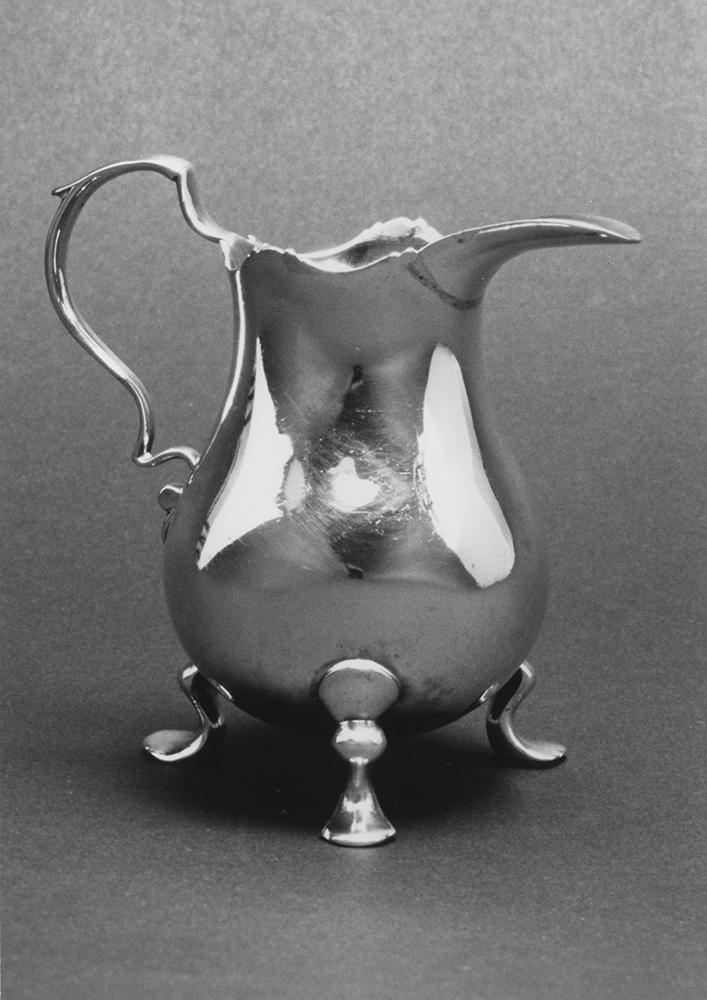
Photo © Jim Smalley.
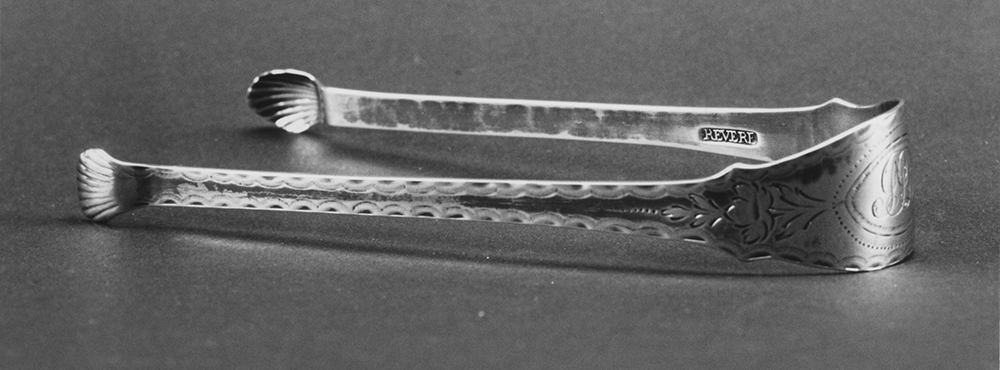
Photo © Jim Smalley.
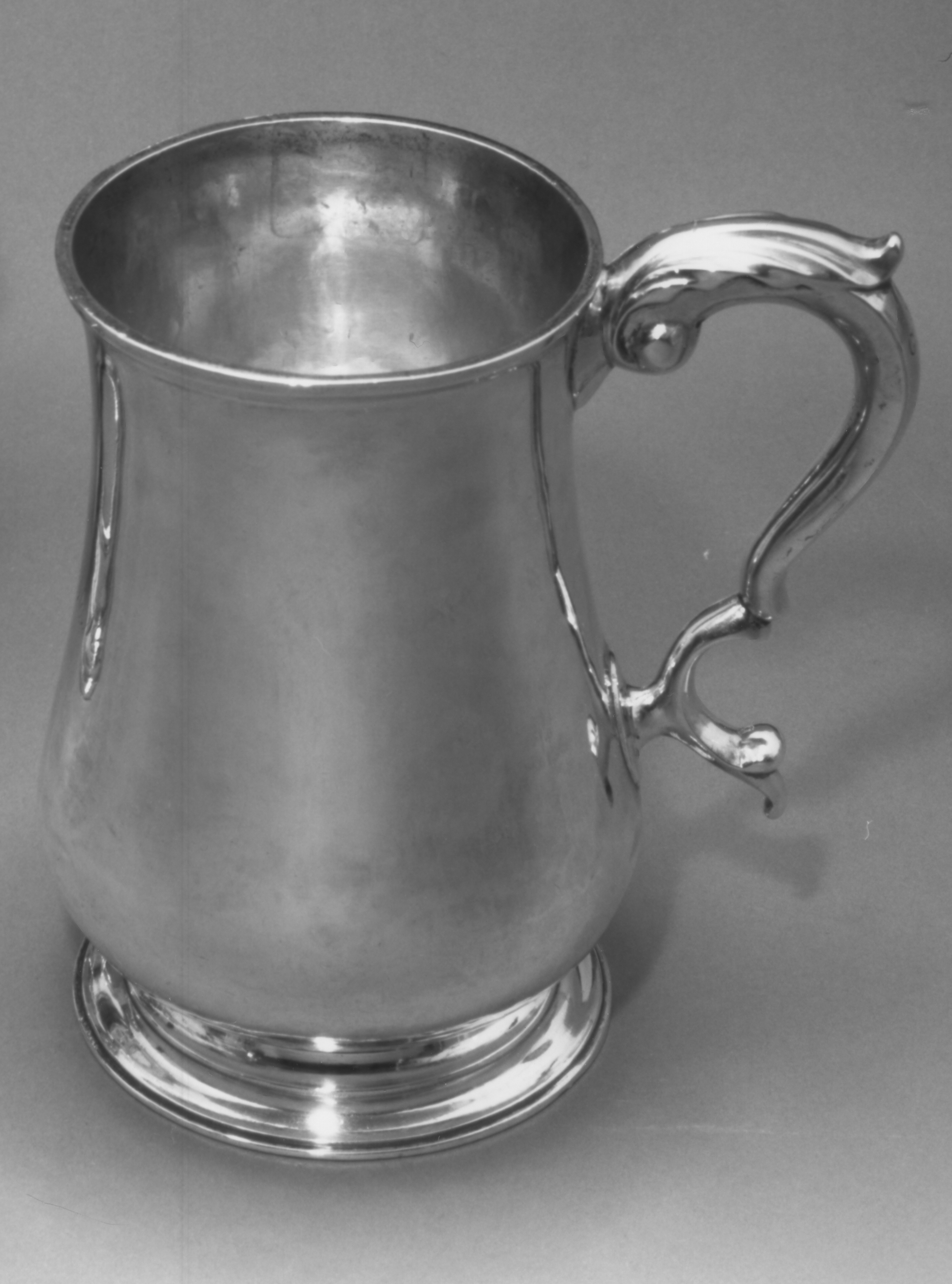
Photo supplied by Sotheby’s.
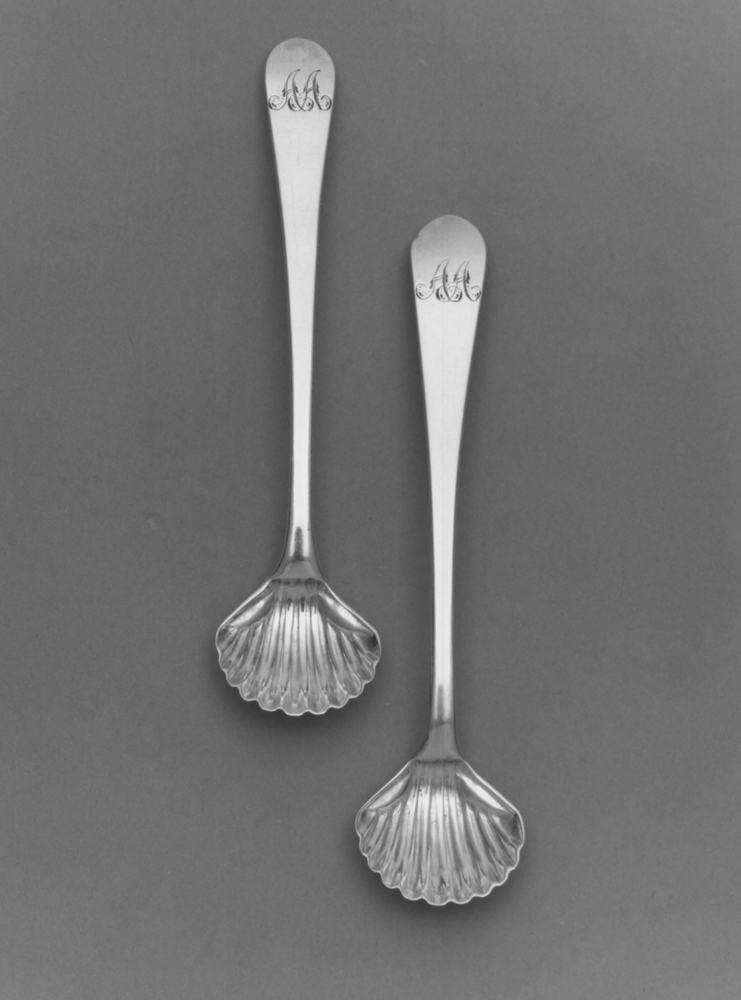
Photo by John Miller.
Revere’s Maker’s Marks
Authentic silver made in Paul Revere’s shop, whether crafted by the patriot himself or by one of his apprentices or journeymen, almost always bears one of his maker’s marks. The mark served to identify the silver and to insure its quality. While a few unmarked pieces by Revere are known, they all have features or documentation to support the attribution.
Revere’s marks featured either his surname “REVERE” in a rectangle, used on larger items, or his initials “PR” in italic or block letters, used on smaller items such as teaspoons. Since the mark was impressed into the metal, by striking with a hammer and die, the lettering appears slightly raised. Revere also used some of his father’s marks. Items made early in his career are often marked “P.REVERE” while later marks bear his full surname with or without a pellet before it. The surname mark is approximately 7/16″ wide and 1/16-3/16″ high.
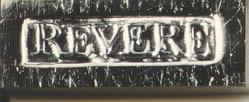
Revere made and repaired small items such as jewelry. There is no known marked jewelry made by Revere although several surviving gold rings are attributed to him. The jewelry was too small to bear the marks used on the silver.
Here’s a sampling of the 5,000 silver objects made in Revere’s shop (from his shop daybooks 1761-1783 and 1783-1797):
2,479 pieces of Flatware (mostly spoons) – 410 before the war (1761-1783) and 2069 after the war (1783-1797)
64 Teapots (some with stands) – 15 (1761-1783); 49 (1783-1797)
60 Creamers (creampots) – 23 (1761-1783); 37 (1783-1797)
89 Canns – 56 (1761-1783); 33 (1783-1797)
50 Sugar Tongs – 16 (1761-1783); 34 (1783-1797)
400 Buckles (mostly pairs) – approximately 201 (1761-1783) and 199 (1783-1797)
30 Porringers – 20 (1761-1783); 10 (1783-1797)
30 Ladles – 11 (1761-1783); 25 (1783-1797)
Although Revere’s daybooks are the best source of information about what he made, keep in mind that there are known pieces of Revere silver that do not appear in the daybooks, such as his now-famous “Liberty Bowl,” in the collection of the Museum of Fine Arts, Boston. The shape of the Liberty Bowl has inspired many reproductions, called “Revere Bowls,” which are often engraved as gifts or presentation pieces.
How expensive was Revere’s silver?
Paul Revere’s income fluctuated. Before the Revolution, it was as high as 294 pounds or as low as 11 pounds in any given year. As a successful master craftsman and shop owner, his average annual income was 85 pounds per year. A journeyman might earn 40-45 pounds per year, while a laborer in Boston would be lucky to take home 30 pounds with steady work.
In the early 1760s, a laborer earning 30 pounds per year might be able to afford a child’s spoon for 8 shillings or a pair of silver knee buckles for 6 shillings 8 pence but not a coffee pot, worth over 17 pounds. Before buying his home in North Square, Paul Revere paid 16 pounds for an entire year’s rent on a house.
A small creamer or creampot, cost 2 pounds, 2 shillings and 3 pence in 1762. At the same time, a teapot with a wooden handle, probably much like the one Revere is holding in the portrait by John Singleton Copley, cost 10 pounds, 16 shillings and 8 pence. In 1763, six teaspoons cost 9 shillings, while a pair of silver canns cost 3 pounds 6 shillings and 8 pence. In 1782, Revere charged 2 pounds 3 shillings for a pair of shoe buckles.

